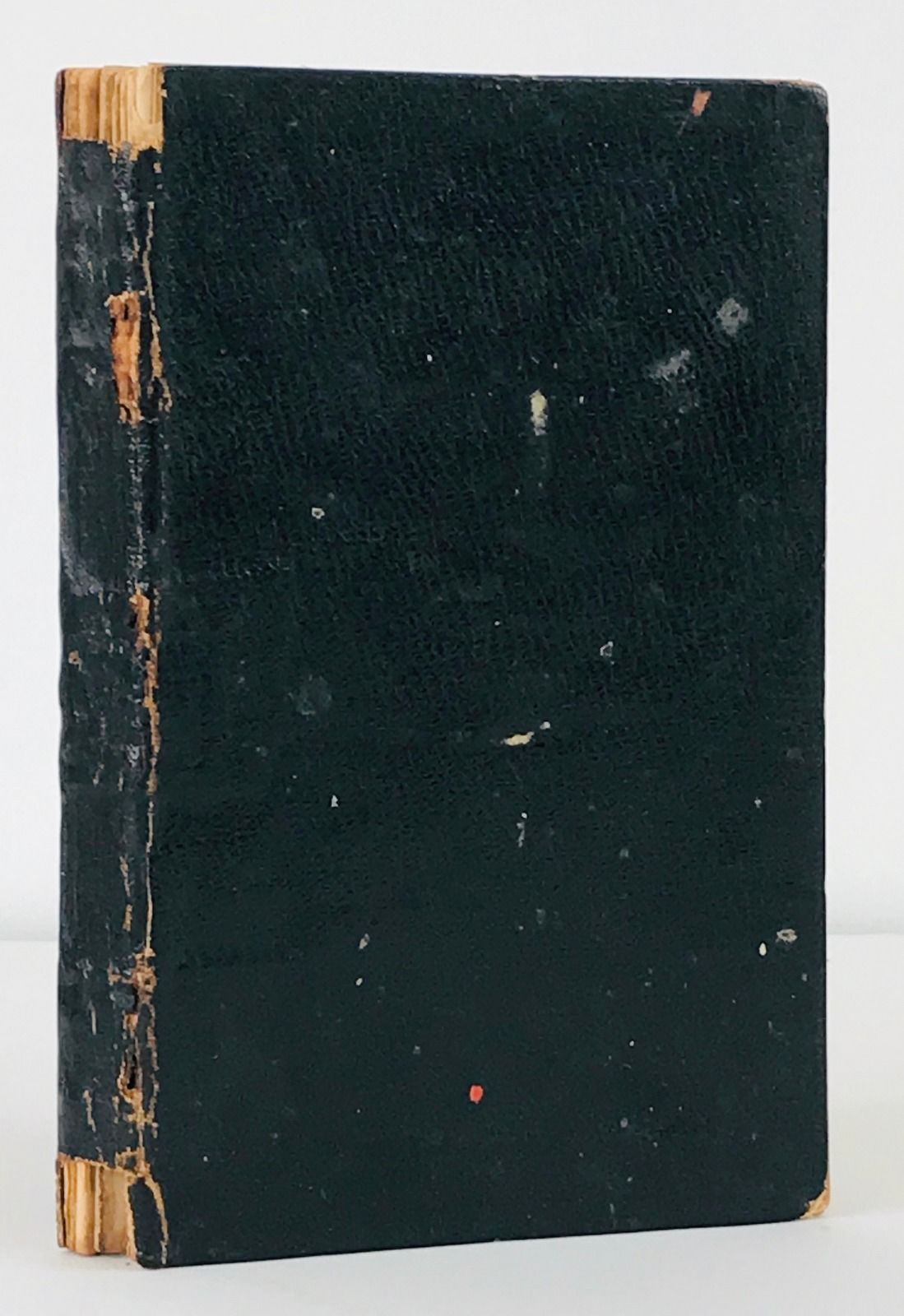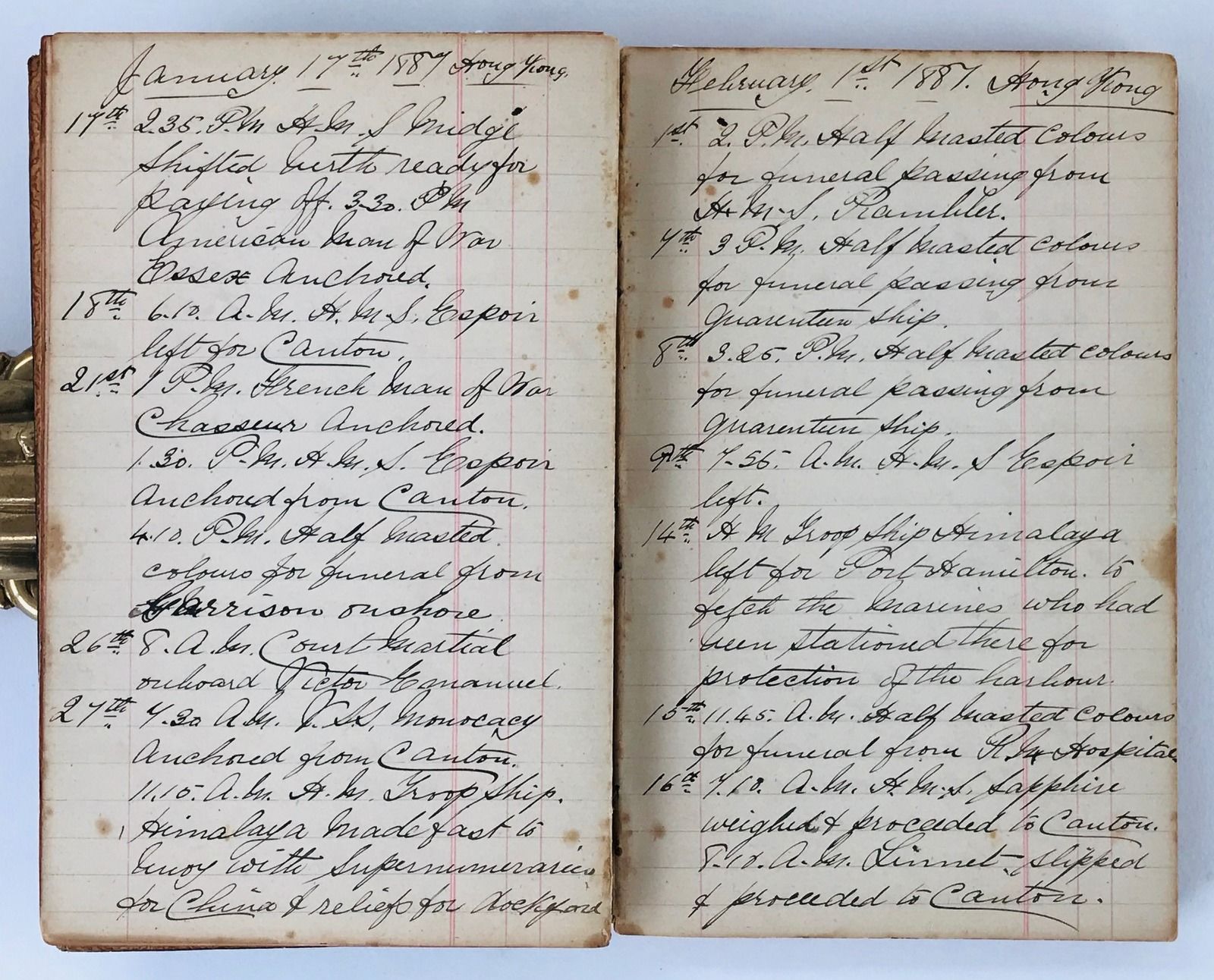Hong Kong: Unpublished, 1886. Diary of a young British officer serving with the China Squadron, based in Hong Kong and patrolling Chinese and Japanese waters between 1886-1889. Parker writes in a small octavo which is bound in black textured cloth over thin boards, chipping to spine covering; decorative printed endpapers. Ruled leaves with most stapled gatherings now loose from the glued binding. The manuscript runs to 118 unnumbered pages written in an easily legible hand using black ink plus blanks. Parker sets out his remit on the first flyleaf: 'W.H. Parker. Diary of the 2nd Commission of H.M.S. Linnet Commissioned at Hong Kong on the 7th January 1886 and Paid off on the 24th January 1889.' The diary proper begins 17th November 1885 when Parker 'Embarked on board H M Troops Ship Oronto' in Plymouth arriving a few weeks later 'Anchored at Hong Kong ships lying there Audacious Flagship... Commodore's Ship Daring Linnet Midge Espoir Ramble Gunboats.' Parker's entries tend to be short and to the point and on 6th January 'Linnets ship company pack bags and stow them in the lighter 2.25 Arrived to our respective ship...' Tours of duty take Linnet to Chemulpo (Incheon, South Korea), Nagasaki, Shanghai and Chefoo (Yantai, China) where they 'dressed ship and fired a Royal Salute of 21 Guns in honour of Prince Chung's visit' on 20th May, 1886 (Yixuan also known as Prince Chun, was an imperial prince and statesman Qing dynasty in China). The incessant round of patrols, often with other battleships also took Parker to Port Hamilton (Komundo, South Korea) and the more difficult Russian outpost of Vladivostock. Returning to Hong Kong in February 1887 Parker records 'HMS Troop Ship Himalaya left for Port Hamilton to fetch the Marines who had been stationed there for protection of the harbour' - this was a consequence of the British decision to demolish the port following a reduction in the Russian threat. A few days later, still at Hong Kong Parker notes 'Linnet hoisted the flag of Vice Admiral R. Vesey Hanilton commander in chief of China Station' and a day later was delighted to be invited aboard USS Monocacy for a dinner in celebration of 'of the birthday of Washington'. In Shanghai on January 26th 1888 Linnet's crew 'extinguished a fire on shore... Landed fire party.' Parker makes detailed notes of the movements of the other ships in the China Squadron: 'HMS Rambler Anchored from Surveying duty' (Hong Kong March 18, 1888) and very occasionally the whole squadron comes together as on July 23rd 1888: 'Imperiuse [flagship] fired Court Martial gun 11.20 AM The Squadron was organised as follows. 1st Division 1 Imperieuse 2. Heroine 3. Wanderer 4. Constance 5. Linnet. 6. Swift. 2nd Division 7. Cordelia 8. Sapphire 9. Mutine 10. Leander 11. Alacrity 12. Porpoise.' Russian relations seem to have been particularly tetchy with the delivery of 'sealed letters for the Russian Goverment and Admiral at Vladivostock asking permission to allow the British squadron to visit that port'in August, 1888). Yokohama was the scene of an important moment for the Japanese navy on October 9th 1888 when Linnet and fellow British battleships: 'fired a Royal salute of 21 Guns in honour of the embarking of H.S.M. the Empress of Japan onboard the iron clad Nanawai for conveyance to Yokohama to lauch the first ironclad in Japan... Squadron manned the yards and fired a Royal Salute...' Parker observes the end of his posting on December 1st 1888: 'This being our last day onboard Linnet as we turn over to Victor Emmanuel tomorrow to await the Arrival of HM Troopship Tamar Please contact Christian White Rare Books Ltd for more information or images of this item 1886








